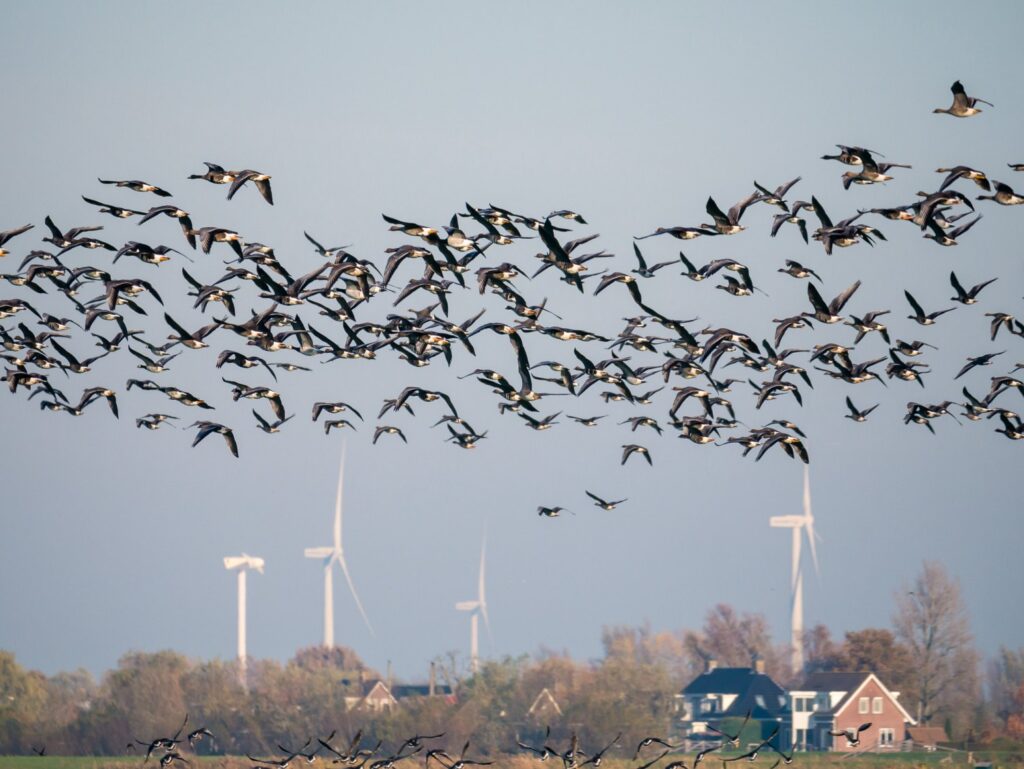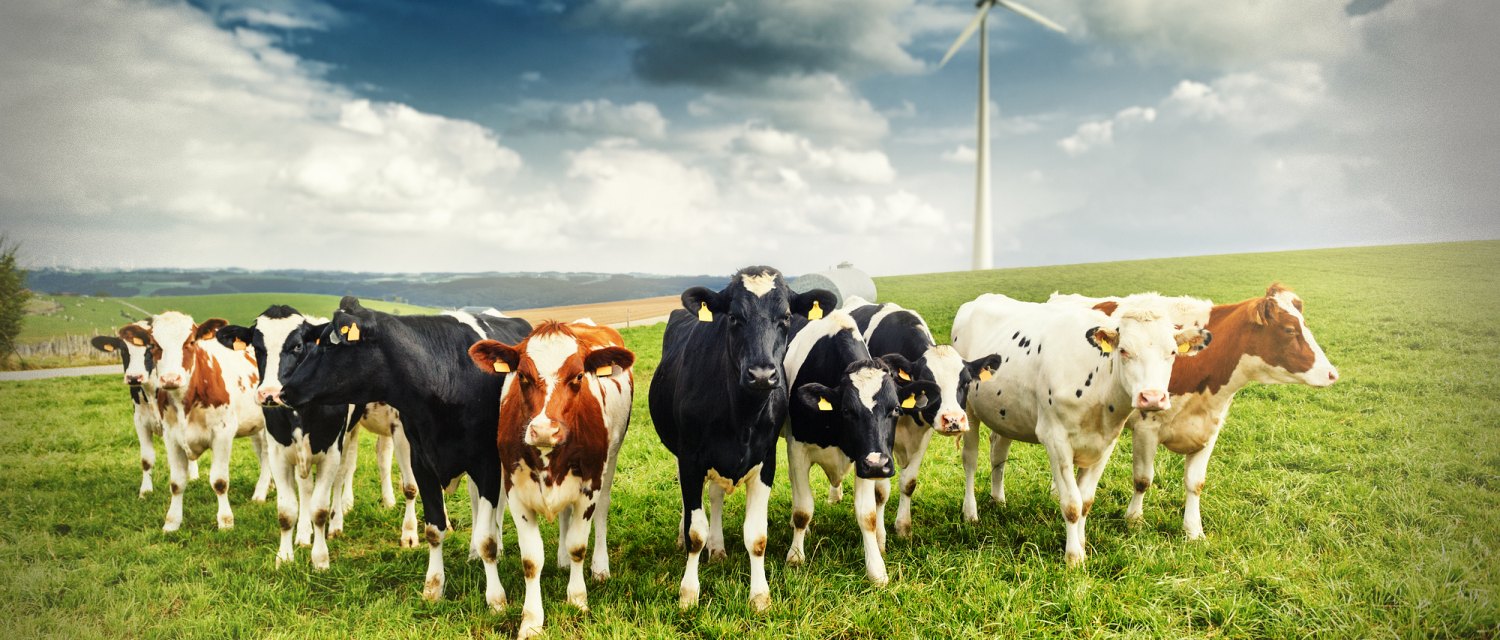Recent studies are definitive: wind turbines wreak havoc on many animals, bats, and fowl that are forced to live among them.
In a landmark court decision in France,1 evidence was presented showing that exposure to IWTs (industrial wind turbines) is associated with an increased risk of AHEs (adverse health effects).
This analysis concludes that living or working near IWTs can result in AHEs in both people and animals:
“Wind turbines and adverse health effects: Applying Bradford Hill’s criteria for causation”, (2021) Dumbrille et. al., journals.lww.com
Regarding animals, the study concluded:
- Reports of negative effects on animals, which are known not to show any nocebo effect and which live close to wind turbines, resulted not only in stress reactions, but also in also negative effects on fertility, development and reproduction. Reports from the USA, Canada, Denmark, Japan, Portugal, France, Taiwan and Great Britain indicated teratogenic and mutagenic effects (see Appendix Dumbrille et al.).
In layman’s terms, that’s malformed embryos and genetic mutation in animals.
Health impacts of wind turbines on animals, birds and bats is a perennial question, especially as wind farms proliferate around the globe. Studies from well over a decade ago were already harbingers that the noise and infrasonic (low inaudible range frequencies) of wind turbines were affecting animals. In a 2009 paper, the author’s concluded that “There is growing documentation from medical professionals about the related adverse health effects on humans and animals living within affected areas.”2

There are over three hunded studies compiled by National Wind Watch on the adverse effects in a range of animals, birds, bats, and insects (see here). For instance, cortisol levels have been found to increase in geese and ground dwelling animals3 when as near as half a kilometer from wind turbines. By the end of the study, geese nearest the turbine had lost weight, weighing in 10% less than those further away.4
‘Researchers found that wind turbines in Germany resulted in a loss of about 1.2 trillion insects of different species each year. In India, they found almost four times fewer buzzards, hawks, and kites in areas with wind farms—a loss of about 75 percent. They found that wind turbines are akin to adding a top predator to the ecosystem, killing off birds, but allowing small animals to increase their populations resulting in a trickle effect throughout the ecosystem.’5
Cattle farmers have laid blame for mass deaths and other issues on wind turbines,6 including the electrical currents induced by them through the ground.7 Equestrian property owners have reported their horses dwelling at the far reaches of their pastures to escape the effects of the massive turning blades.8 And in Norway, the Supreme Court awarded herdsmen there 90 million NOK (10 million USD) in 2021 for wind farms that interfered with their livelihoods:
The animals steer clear of the turbines because they are disturbed by their view and noise. On top of that, in the coldest months large chunks of icy snow can be thrown into the distance as the blades turn. It is dangerous for humans and animals alike.
Leif Arne Jåma, “Indigenous Sámi Win Landmark Case against Wind Power Company”, Nov. 4, 2021; earthisland.org
While buildings and cats claim hundreds of millions of bird deaths each year, the proliferation of wind farms is only making matters worse. Studies show as many as 1.17 million birds are killed by wind turbines in the United States alone each year — a number that will only increase with the rapid spread of massive wind farms.9 While that’s far less than deaths by cats, vehicles, communication towers, etc. what is notable and concerning is that it is large migratory species that are being affected.
The results of this ground-breaking study are really eye-opening — the buildout of wind energy is already having a negative cumulative impact. There are more than 10,000 wind turbines scattered throughout the Whooping Cranes’ migratory pathway. We now know that too many of these turbines are eliminating important migratory stopover habitat for this Endangered species.
Joel Merriman, Director of the Bird-Smart Wind Energy Campaign at American Bird Conservancy, April 1, 2021; ESA
And German zoologists are raising the alarm that millions of bats are slaughtered each year because of these industrial wind projects.10 See Bat Apocalypse.
Still, this article has merely grazed the scope of environmental harm these massive industrial warm farms are causing to wildlife (and, of course, people).11 Which is why it is almost incomprehensible that the province of Alberta may permit two wind farm projects to be built along the North Saskatchewan River near Elk Point, Alberta — a major recreational and wildlife corridor, fishing paradise, migratory path, and horse and cattle sanctuary, highly populated with rural residences.
What are they thinking??
- November 8, 2021; theconexxion.com; cf. September 7th, 2022; windaction.org[↩]
- “Adverse Health Effects of Wind Turbines”, Keith Stelling, MA, MNIMH, Dip Phyt, MCPP (England), with additional files from Carmen Krogh, BScPharm; October 20, 2009[↩]
- cf. wind-watch.org[↩]
- March 6, eastcountymagazine.org; cf. study here[↩]
- July 19, 2019; instituteforenergyresearch.org[↩]
- dbldkr.com[↩]
- stopthesethings.com[↩]
- stopthesethings.com[↩]
- abcbirds.org; energymonitor.ai[↩]
- cf. dailysceptic.org; see study here[↩]
- cf. Wind Turbines and Health: The Studies[↩]
Wind Concerns is a collaboration of citizens of the Lakeland Alberta region against proposed wind turbine projects.


